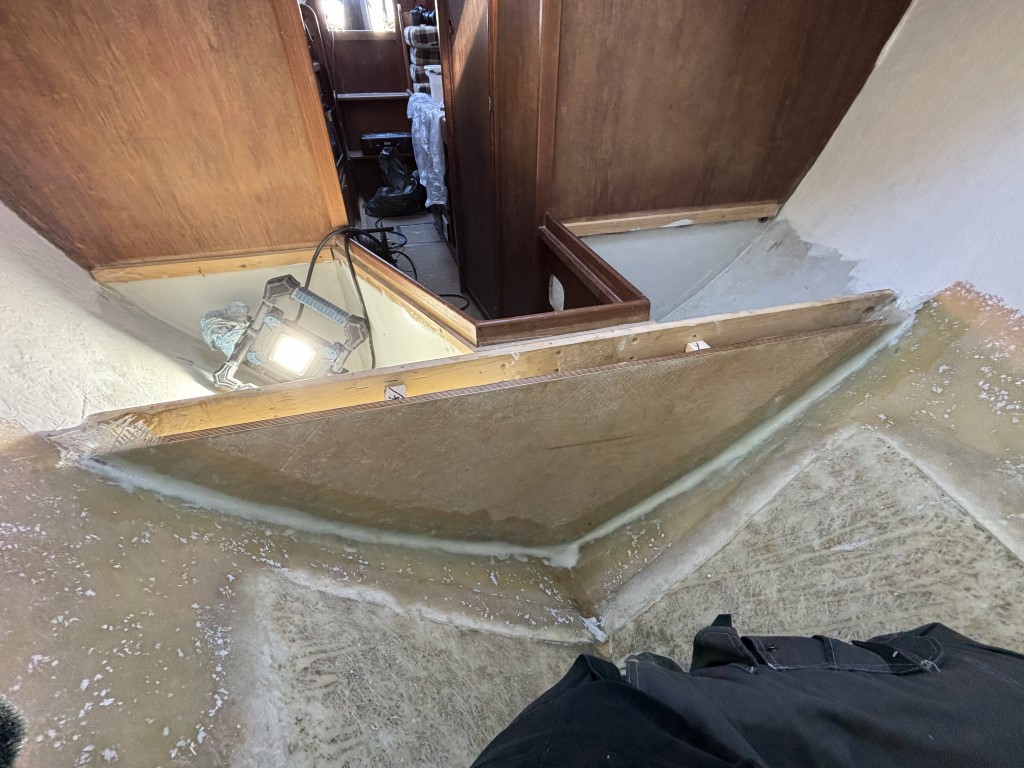If you’ve ever found yourself wondering about the right order of laminating fiberglass—whether you’re closing a through-hull, fixing a hole, or making a solid tabbing for your bulkheads or water tank—and then hit up Google, you’ve probably run into a lot of conflicting advice. Some people on forums say start with the smallest layer, others say the largest, and even the books don’t agree. So, what’s the right way to do it? This post is here to clear that up once and for all.
Small or Big cloth first?
The short answer: the best approach is to lay up the largest piece first. But, according to Don Casey, who’s well-known for his book This Old Boat, this only applies if you’re working with polyester or vinylester resin. For epoxy, it doesn’t make a difference. Casey even updated this in later editions, as the first version of his book said otherwise. He also addressed this exact question on Sailmagazine.com.
West System’s official boat repair guide also recommends starting with the largest piece of cloth and then adding smaller patches on top. You can read it for free here.
Personally, I’d say it doesn’t really matter with epoxy. I have used both methods for tabbing and patching holes, and both resulted in a solid, strong repair. You can achieve the same final finish either way; it just comes down to how much sanding or fairing is needed based on your layup approach. You can also start with large pieces, then smaller ones, and finish with a large piece again to create an even surface before sanding and fairing. For structurally important areas where strength is key, I’ll stick to the large-to-small method going forward. But for cosmetic repairs, I’ll use whatever fits the situation best.
However, I only laminate with epoxy. Anything you repair with epoxy and fiberglass will end up much stronger than the original polyester layup. So, whichever method you choose, you’re still getting a super strong repair.

Why the Large one First
To back up this approach, here’s a list of key arguments for laying the largest piece first:
- Maximizes Bond Strength: The largest piece covers more surface area, creating a stronger primary bond and distributing load stresses more evenly across the repair.
- Better Saturation and Bonding: Larger pieces saturate more effectively with resin, forming a continuous layer that minimizes air bubbles and voids, which could weaken the bond. The greater contact area with the substrate (like the hull or bulkhead) helps distribute forces more evenly and reduce stress concentrations.
- Prevents Weak Spots: Starting with smaller pieces can trap air between layers, creating weak spots that compromise the overall strength of the laminate.
- Maintains Proper Thickness: Using the largest piece first helps build up the required laminate thickness efficiently, maintaining strength without the risk of overbuilding.
- Resin Considerations: With polyester or vinylester resins, starting with the largest piece ensures a strong bond to the underlying surface. If smaller pieces are laid first, the bond at the perimeter of the larger pieces may be weaker. While epoxy is more forgiving, starting large still helps reduce voids and minimizes drainage issues.
- In Tapered Repairs: Though it might seem logical to go small-to-large to match a taper, starting with the largest piece ensures the new fabric bonds securely to the original laminate at the perimeter. This approach leads to a stronger, more effective repair by distributing stress evenly and avoiding weak spots.

